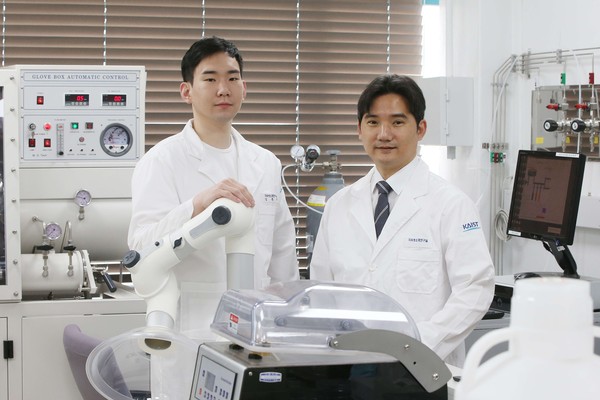A research team led by Professor Seungbum Hong from the Department of Materials Science and Engineering has succeeded in developing an imaging technique for identifying the distribution of components in battery electrodes using atomic force microscopy. This technology is expected to facilitate the design process of solid-state batteries and lay the foundation for innovation in manufacturing processes of other electrochemical materials. The study was published in ACS Applied Energy Materials on April 27.

A solid-state battery utilizes solid electrodes and electrolytes instead of the liquid or polymer gel electrolytes found in conventional lithium-ion batteries, which tend to exhibit a high probability of ignition due to shock or pressure and vulnerability to prolonged charging station demand. On the other hand, solid-state batteries offer better safety and wider electrochemical stability, so they are often cited as the future of rechargeable battery technology.
Nonetheless, this type of battery still has shortcomings, such as limited electrical conductivity, insufficient contact areas, and high interfacial resistance between the electrode and solid electrolyte. Studies have been conducted on composite electrodes using lithium ion conducting additives to provide ion conductive paths at the interface, thereby increasing the overall ionic conductivity. However, there is a need for the development of proper methods to distinguish and analyze the ionic behaviors of the separate components of such electrodes on a microscopic scale, in order to reach a significant increase in battery performance.
Professor Seungbum Hong’s team utilized a combination of multiscale electrochemical strain microscopy (ESM) and lateral force microscopy (LFM) analysis on composite anodes in ambient conditions. The team explored ESM amplitude/phase and LFM’s friction force dependence on the AC drive voltage and the tip loading force and used their sensitivities to mark each component in the composite anode.
Unlike other analysis methods currently in use, this method provides higher spatial and intensity resolution for detected signals, allowing it to identify distinct components of the composite anode and simultaneously measure their properties. The method also offers the advantage of 3D surface morphology information on the components.

